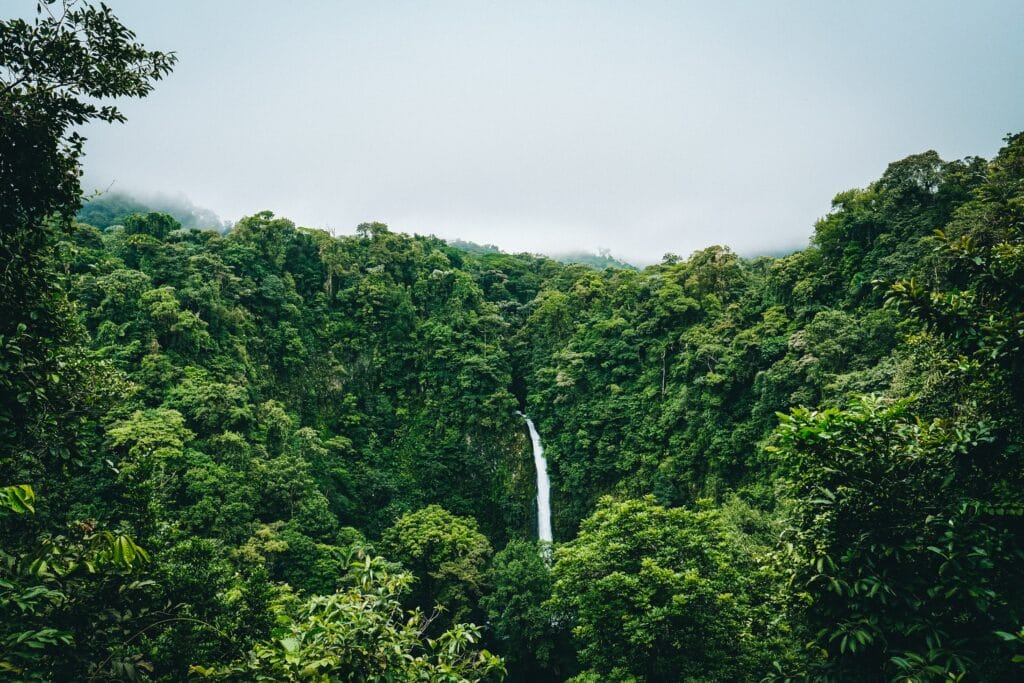What is Cacao?
Cacao refers to the seeds or beans found inside the fruits of the Theobroma cacao tree, typically cultivated in the equatorial countries of South America, West Africa and Asia.
Once harvested, these beans are dried and fermented to develop their distinct flavour and aroma – they are then further processed into various cacao or cocoa products. To make ceremonial cacao, the fermented beans are lightly toasted or sun-dried, and then ground into a paste. This creates an unadulterated product with a rich nutritional and flavour profile.
History
A centrepiece of the ancient Mesoamerican traditions, Theobroma cacao (where ‘Theobroma’ means ‘Food of the Gods’) was a staple in the Olmec, Zapotec, Aztec and Mayan civilizations as a sacred plant medicine enjoyed in rituals to nourish the physical and energetic body.
The term ‘Cacao’ comes from the Maya word ‘Ka’kau’ which means ‘Heart Blood’
For long it was thought that the Cacao tree was first cultivated and used by the Olmecs around 3900 years ago. However, a 2018 study found archaeological artefacts with T. Cacao DNA in Mayo-Chinchipe sites in Ecuador from around 5300 years ago, which predates the evidence of Cacao use in Mesoamerica by 1700 years. Supporting these findings, recent genetic analysis has traced Cacao domestication back to South America (present-day Ecuador) roughly around 3600 years ago.
From there, it spread northwards and became an integral part of the ancient Maya and Aztec traditions, not only as a nutritional source, currency and medicine, but as an offering in their sacred rituals and ceremonies, including those associated with birth, union, sacrifice and death. A sign of deep reverence, Cacao featured extensively in Mayan and Aztec mythology and even played an pivotal role in their creation myths. In the sacred Popul Vuh, the Mayan Creation myth goes that humans were made by the gods out of water, earth, wood, maize, fruits and cacao.

Medicinal Uses
Recently, the benefits of this ancient elixir have garnered significant attention in the scientific community with ongoing research into the potential health benefits that cacao-derived products offer, including enhancing cognitive functioning, immune support, cardiovascular health, gut-microbiome support, blood sugar control and elevating mood.
Gut Microbiome Support
A growing body of research has documented the role the gut plays in supporting healthy physiological and psychological functioning. Preliminary evidence suggests that cacao, with its abundance of fibre and polyphenols (plant compounds which have antioxidant properties, including flavanols) exerts a prebiotic effect that is essential for supporting our internal ecosystem of gut microbiota.
A recent study demonstrated that consuming high-cocoa flavanol drinks for four weeks noticeably increased the levels of certain beneficial bacteria in the gut, specifically the Bifidobacteria and Lactobacilli. A similar study found that consuming 85% cocoa dark chocolate three times a day for three weeks reduced negative emotions and increased gut microbial diversity, specifically with elevated levels of Blautia obeum. Interestingly, high levels of Blautia obeum are often found in the gut of healthy individuals, suggesting a link between the prebiotic activity of dark cocoa and improved mood via the gut-brain axis. One potential explanation could be the polyphenol content of cocoa, which has antioxidant properties and has been showed to reduce stress and anxiety in separate lines of research.
Additionally, a team at Louisiana fed cocoa through an in vitro model system which simulated gastric digestion and colon fermentation. The lower-intestinal gut microbes feasted and fermented on the carbohydrates into short chain fatty acids (anti-inflammatories), reduced the pH, and increased the polyphenol content that could be absorbed into the blood stream. Again, these results support the role of cacao in maintaining our digestive health.
Mood Boosting
Whether through the gut-brain axis or through other mechanisms, cacao and its more processed derivates have garnered attention due to their potential mood-enhancing capacities. For example, cocoa flavanols in dark chocolate are associated with improved mood and higher levels of calmness and contentedness.
In an even larger sample study, data from 13626 adults participating in the National health and Nutrition Examination Survey showed lower levels of clinically relevant depressive symptoms in those who reported consuming dark chocolate. While we can’t infer causality from these results, they do point to an interesting relationship between cacao consumption and mood. In addition to their high flavanol content, there are many potential culprits of cacao’s mood-boosting properties. Cacao contains anandamides (taken from the Sanskrit term which translates to “bliss”), which stimulates cannabinoid receptors in the brain and can produce subtle feelings of euphoria similar to THC. It also contains phenylethylamine (“the love drug”), a neuromodulator that stimulates the release of endorphins, and triggers release of dopamine, norephinephone and serotonin, which are all key in mood regulation.
Another factor could be the sensory pleasure of consuming cacao. While it is an incredibly nutrient-rich food, the flavour, the aromas and the experience are all thought to play an important role in the mood-boosting effects.
Cognitive Function and Attention
Another avenue of research has explored the positive effects of cacao consumption on enhancing cognitive functioning. While plant flavanols more generally have been associated with improved cognition and decreased risk of dementia, recent findings have found that cocoa flavanols improves acute cognitive functioning and reduces perceptions of mental fatigue during sustained mental demand. The CoCoA study even suggested that Cocoa flavanols can reduce age-related cognitive dysfunction in healthy individuals across verbal fluency, attention and cognitive flexibility.
As well as the high flavanol content, cacao is rich in theobromine, a gentle cardiac stimulant and vasodilator that is closely related to caffeine. Not only does theobromine provide a more grounding source of energy, in one study in mice, a theobromine-rich diet facilitated motor learning and increased brain-derived neurotropic factor (BDNF) levels, a key protein involved in brain cell functioning, neuroplasticity and learning.
While the exact mechanisms of these changes is not well understood, imaging studies have also shown that Cacao increases cerebral blood flow in both healthy young people and healthy elderly people, suggesting a promising role of regular cocoa consumption in supporting cerebral vascular health.
Cardiovascular function
Finally, the most extensively studied benefits of Cacao are its cardio-protective effects. One key finding is its ability to reduce blood pressure, which is a risk factor for cardiovascular disease. A recent review of 35 clinical trials showed a modest but significant cacao flavanol-induced decrease in blood pressure. One potential mechanism is the flavanol-induced increase in nitric oxide levels in the blood, which enhance the function of blood vessels, increase blood flow, reduce bad ‘LDL’ cholesterol levels and lower blood pressure. In turn, these factors lower risk of heart attack, heart failure and stroke.
In another finding, consumption of a daily dose of dark chocolate with high levels of flavanols showed improved blood vessel function in healthy people over the course of two weeks. Ultrasound measurements of the main artery in the arm dilated by about 13% more that the measurements taken at the beginning of the study. Blood samples showed higher levels of the flavanols epicatechin, which is the likely culprit of the increased blood flow. A similar study showed improved function of the lining of heart and blood vessels after daily consumption of 70% cocoa over a month.
Another factor could be the mineral content of cacao, which is one is one of the highest plant-based sources of iron and magnesium, as well as containing high levels of calcium, zinc and potassium which are all essential for supporting a healthy cardiovascular system.

Ceremonial and Ritual Use
Drawing upon both scientific research and ancient wisdom, Cacao ceremonies have gained popularity in recent times as a tool to facilitate meditative states and release emotional trauma stored in the body. Often referred to as a heart-opening medicine, cacao is believed to release negative energy and blocks in the heart space, fostering feelings of compassion and gratitude.
Cacao when consumed in ceremony or ritual offers a safe and nurturing environment to connect with our inner selves and others in an elevated and more intimate state, through accompanying techniques such as breathwork, meditation, sound journeys or ecstatic dance.
While no two cacao ceremonies are alike, whether you are joining a group ceremony or creating an at-home ritual, the most important element is setting an intention. Most ceremonies start off with setting a collective or personal intention, connecting with the cacao spirit and expressing gratitude. You will experience a gentle shift in your consciousness, entering a grounded state that helps with healing work and inner processing, facilitating the release of what no longer serves you.
Cacao Ceremony at the Sen Wellness Sanctuary
At the Sen Wellness Sanctuary, we offer transformative fire and cacao ceremonies during our Signature Retreats with sacred chanting and dancing. It is a collective spiritual experience of expansion and elevation hosted by Sen Wellness Founder, Sam Kankanamge.
“Gathering a group of special souls for a ten-day journey together, we believe that no group comes together by accident, there is always a deeper purpose and intention. Some of the deepest healing can occur when we allow others to be a mirror of ourselves. The group naturally evolves during the retreat, strong connections are made and lasting friendships are formed”.
For those looking to create an at-home cacao ceremony, we will soon be releasing the Sen Wellness nourishment book, inspired by the ancient wisdom of Ayurveda and the flavours of Sri Lanka. Within this culinary exploration is a recipe for the perfect cacao ceremony, whether you are seeking a solitary moment of self-reflection and connection with the cacao plant, or a ceremony to connect with loved ones.
